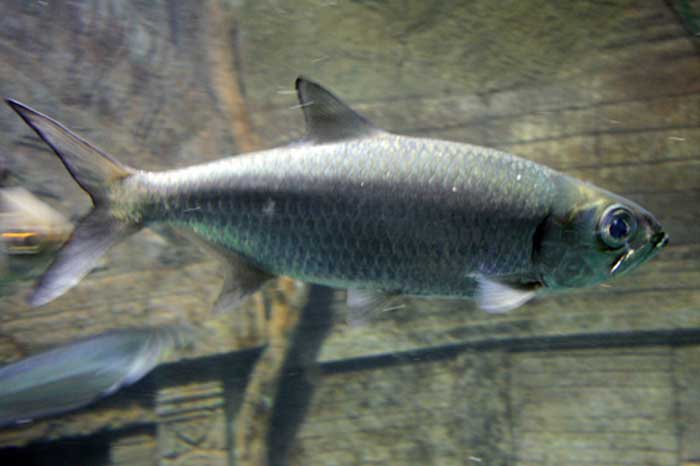Megalops cyprinoides (*) Cladus: Eukaryota Name Megalops cyprinoides (Broussonet, 1872) Vernacular names The Indo-Pacific tarpon or oxeye, Megalops cyprinoides, inhabits tropical coastal and brackish waters of the Indo-Pacific oceans. In appearance, it is like the Atlantic tarpon, Megalops atlanticus: olive-green on top, and silver on the sides. The large mouth is turned upwards, the lower jaw containing an elongated bony plate. The last ray of the dorsal fin is much longer than the others, reaching nearly to the tail. It feeds on smaller fish and crustaceans. It is capable of filling its swim bladder with air and absorbing oxygen from it.
Australia Tarpon live in many tropical areas of Australia in both fresh water and saltwater. Species in fresh water tend to be smaller than the saltwater species, growing just over 50cm, while saltwater species grow over a metre. In saltwater they mainly feed on prawns and herring, but also many other small fish. In fresh water there is not a significant difference in their food habits; they eat freshwater prawns and bony bream mainly. Unlike the Barramundi, they are able to breed in fresh water and saltwater. References Froese, Rainer, and Daniel Pauly, eds. (2005). "Megalops cyprinoides" in FishBase. 05 2005 version.
Source: Wikispecies: All text is available under the terms of the GNU Free Documentation License |
|

